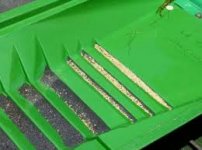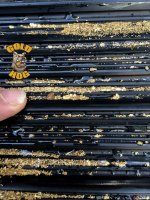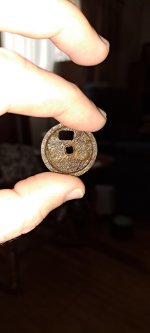Over the years we have really come to understand the importance of "varying exchange and capture zones" in gold mining.
Watching 1000's of controlled runs, doing flow model testing, Plexiglas sluices, commercial op work, flow studying, etc.
FAILURE........ is often the best teacher...
Basically......in simple terms....some things just like to hide in different places.
Some has to do with settling velocity and hydraulic equivalence, but a great deal of this is greatly impacted by the particles hydrodynamic profile (shape) and size.
Understanding that making SPACE and zones for "different types, size and shapes of gold" is important.
You can also PREVENT large objects from settling in certain areas as well by limiting the "space" and "hiding area" which is important
in areas with lots of "heavies".
The pics below are after run cons through the Multi Sluice.
Thought it was cool to see the varying areas and the concentration of lead shot on that one line.
Not a real "scientific" post.... more so a fun observation.
Doc
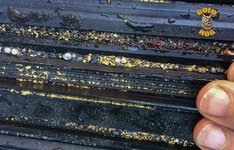
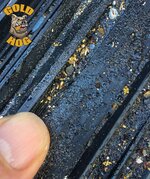
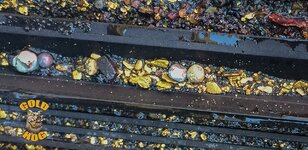
Out of that same one mat space.
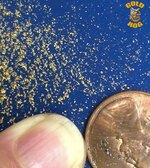
Watching 1000's of controlled runs, doing flow model testing, Plexiglas sluices, commercial op work, flow studying, etc.
FAILURE........ is often the best teacher...
Basically......in simple terms....some things just like to hide in different places.
Some has to do with settling velocity and hydraulic equivalence, but a great deal of this is greatly impacted by the particles hydrodynamic profile (shape) and size.
Understanding that making SPACE and zones for "different types, size and shapes of gold" is important.
You can also PREVENT large objects from settling in certain areas as well by limiting the "space" and "hiding area" which is important
in areas with lots of "heavies".
The pics below are after run cons through the Multi Sluice.
Thought it was cool to see the varying areas and the concentration of lead shot on that one line.
Not a real "scientific" post.... more so a fun observation.
Doc



Out of that same one mat space.

Amazon Forum Fav 👍
Last edited:
Upvote
0



